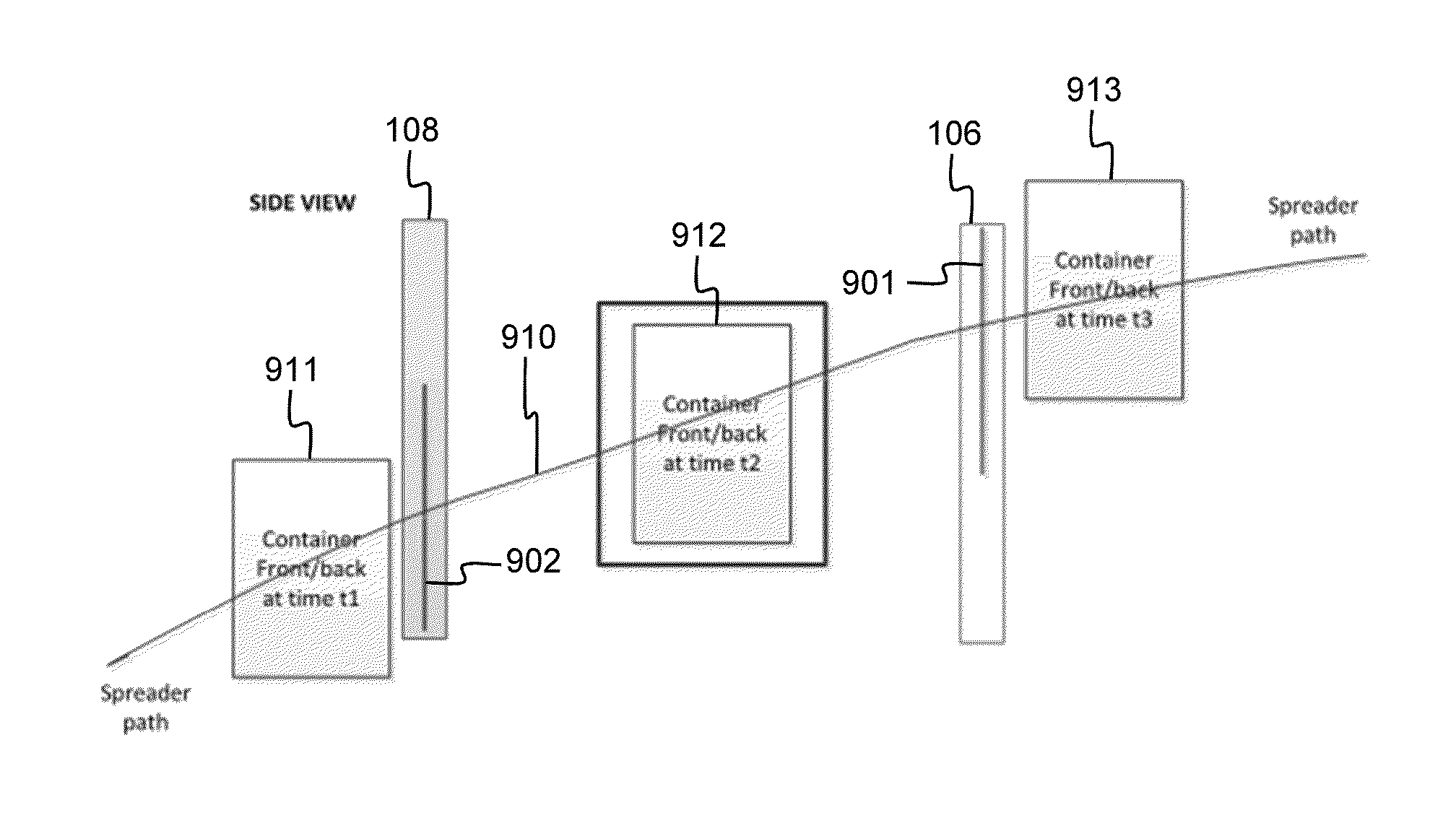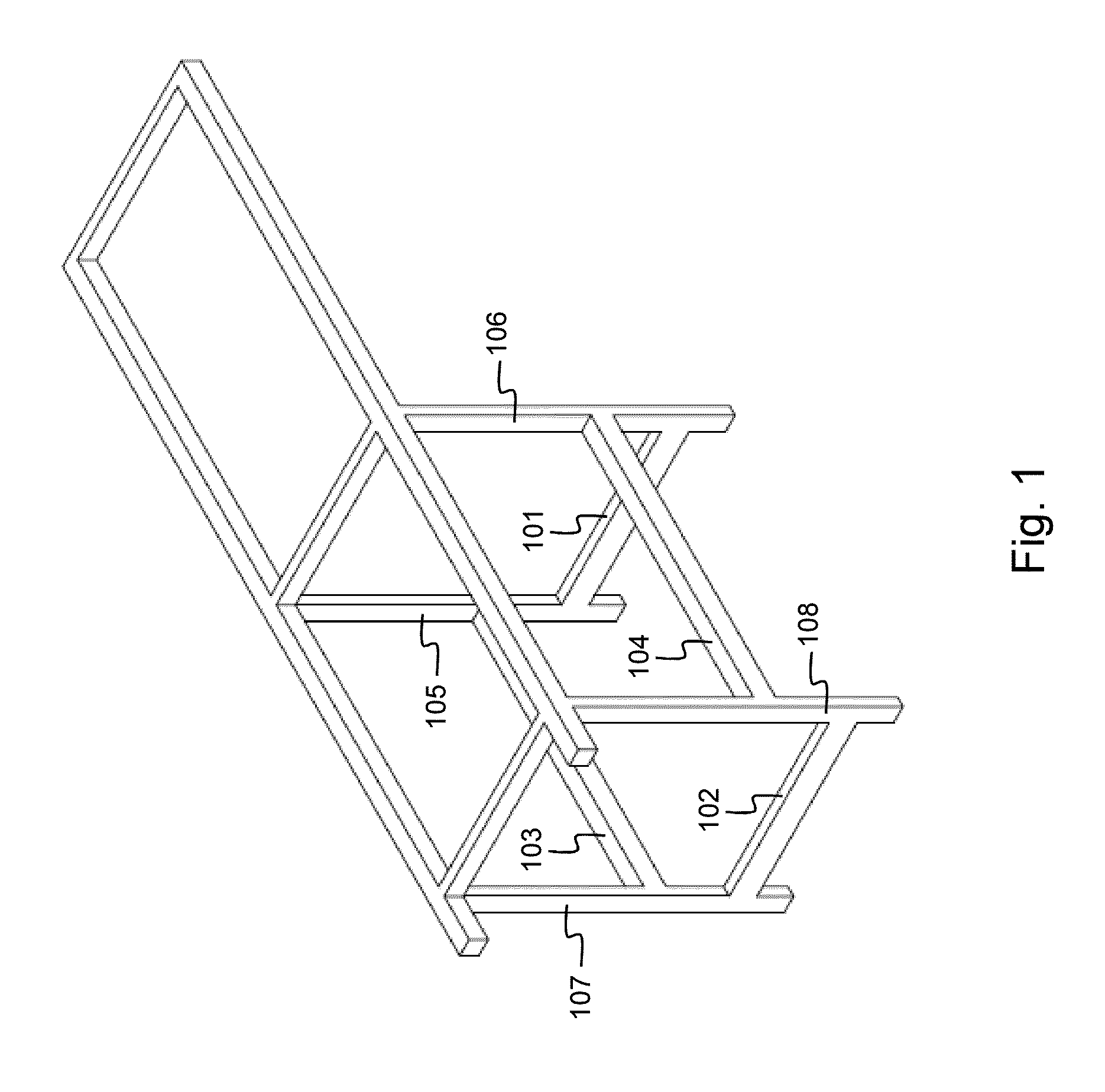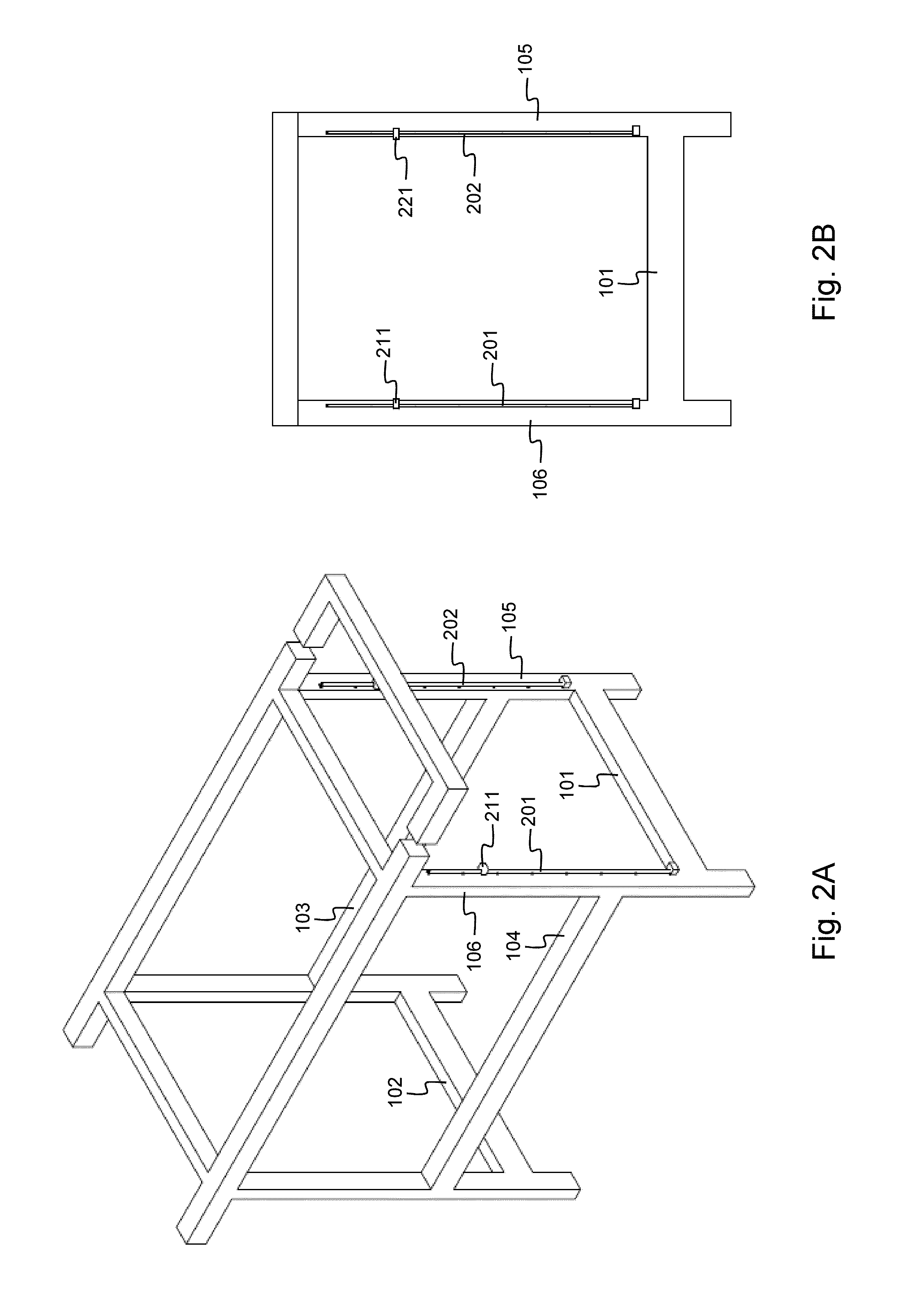Container scanning system
a scanning system and container technology, applied in the field of container scanning system, can solve the problems of affecting the overall performance of the container terminal, slowed container, negative impact on the performance of the container terminal, etc., and achieves the effect of improving the overall performance of the terminal, less inspection and maintenance, and increasing the amount of moves per hour
- Summary
- Abstract
- Description
- Claims
- Application Information
AI Technical Summary
Benefits of technology
Problems solved by technology
Method used
Image
Examples
Embodiment Construction
)
[0089]FIG. 1 shows a crane model that is suitable for deployment of the current invention. Such crane typically has two horizontal sill beams 101 and 102 that are located at a height of 6 meters and two horizontal portal beams 103 and 104 that are located at a height of 13 to 16 meters. The portal beams 103 and 104 are oriented parallel to the crane's boom whereas the sill beams 101 and 102 are oriented perpendicular thereto. Along the crane's boom, a spreader is moving to carry and transfer containers, e.g. from a ship to a storage quay, a train, or a truck, or vice versa. The crane further has four vertical supports of which 105 and 106 represent the sea-side supports and 107 and 108 represent the land-side supports. Such crane is used in ports or railway areas as a result of which the crane is typically designed to have an operational wind load of 25 m / s, to have a breakdown wind load of 50 m / s, to function within a temperature range from −20° C. up to 50° C., and at a humidity ...
PUM
 Login to View More
Login to View More Abstract
Description
Claims
Application Information
 Login to View More
Login to View More - R&D
- Intellectual Property
- Life Sciences
- Materials
- Tech Scout
- Unparalleled Data Quality
- Higher Quality Content
- 60% Fewer Hallucinations
Browse by: Latest US Patents, China's latest patents, Technical Efficacy Thesaurus, Application Domain, Technology Topic, Popular Technical Reports.
© 2025 PatSnap. All rights reserved.Legal|Privacy policy|Modern Slavery Act Transparency Statement|Sitemap|About US| Contact US: help@patsnap.com



